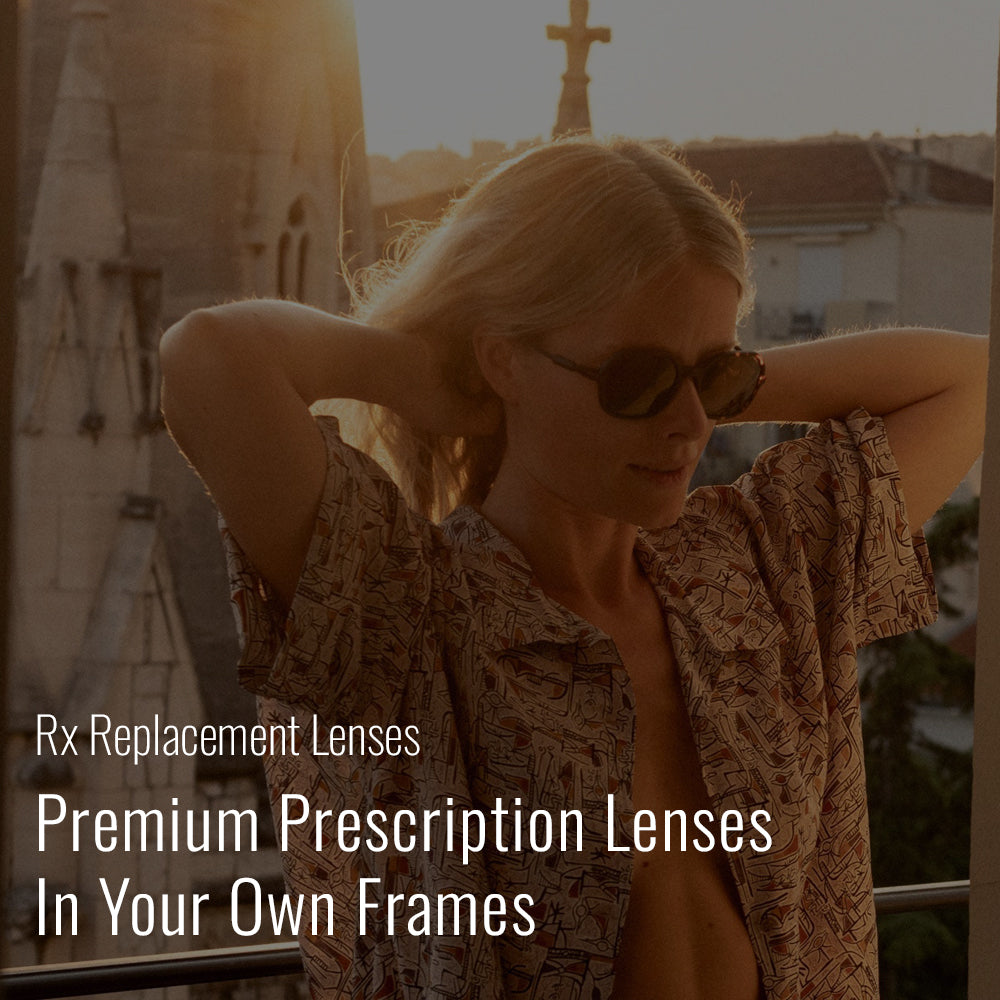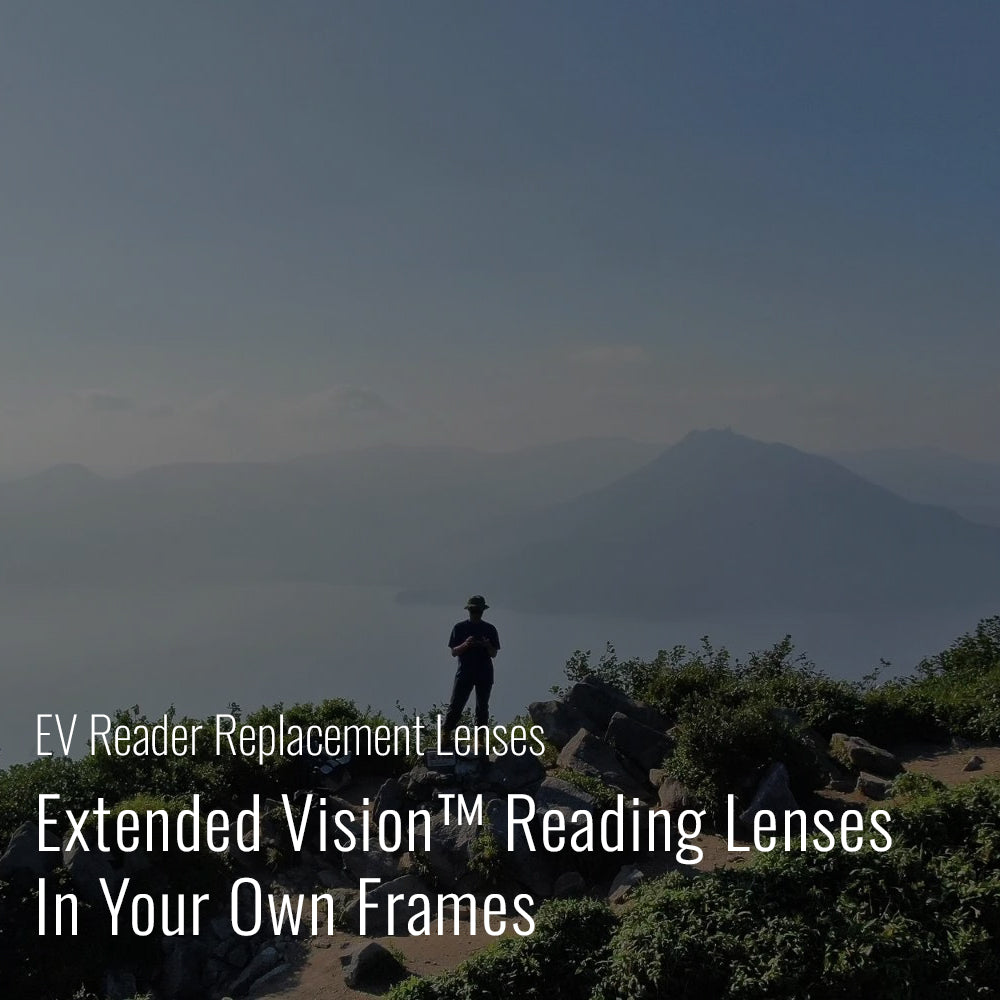Menu
- EV READERS™
Reading Glasses, Reimagined
Mobile Menu
SHOP EV READERS BY BRAND
SHOP EYEGLASSES BY BRAND
SHOP SUNGLASSES BY BRAND
SHOP READING GLASSES BY BRAND

Reading
EXTENDED VISION™ READING GLASSES
Introducing EV Readers: Reading glasses tailor-made to your measurements and designed for the way you need to see.
SINGLE VISION READING GLASSES
Handmade frames in styles by Raen, STATE Optical and L&F paired with custom-made single vision reading lenses.
EXTENDED VISION™ READING GLASSES
Introducing EV Readers: Reading glasses tailor-made to your measurements and designed for the way you need to see.

SINGLE VISION READING GLASSES
Handmade frames in styles by Raen, STATE Optical and L&F paired with custom-made single vision reading lenses.

Prescription
LENSES
Now you can get custom-made lenses with premium coatings mounted into your own favorite frames. Enjoy a better reading glass experience with our collection of Extended Vision™ Reading Lenses. Or give your favorite prescription glasses a second life with our premium Rx Replacement Lenses.
Now you can get custom-made lenses with premium coatings mounted into your own favorite frames. Enjoy a better reading glass experience with our collection of Extended Vision™ Reading Lenses. Or give your favorite prescription glasses a second life with our premium Rx Replacement Lenses.

SHOP REPLACEMENT LENSES

SHOP OMBRAZ LENSES

SHOP EXTENDED VISION™ READING LENSES

Photochromic Lenses (what we call "Indoor / Outdoor lenses"): How Do They Work?
Same lenses. Same frames. They’re clear indoors. They darken into polarized sunglasses outdoors on a sunny day. No fumbling around to find your sunglasses when you step outside. Indoor / Outdoor lenses - also known as Photochromic lenses - perform an amazing dual function of being clear indoors and darkening into polarized sunglasses outside. But how do they work?
First, let’s understand the funny name, “photochromic,” which comes from two Greek words, “photos” meaning light and “chroma” meaning color. In other words, the name literally means color changing in response to light. In a nutshell, that is essentially what happens with these special lenses.
Photochromic technology has been around since the early 1960’s and was inspired by the same method used to develop photographic film. Camera film is embedded into glasses with tiny silver crystals that turn opaque and darken when exposed to light. Similarly, the first photochromic lenses were made of glass embedded with microscopic silver crystals that reacted to light by turning opaque and darkening. This reaction to light caused the lenses to darken. The reaction, however, was reversible. When the lens moved out of the light (indoors, for example), the silver crystals changed their structure and became less opaque which resulted in the lens turning transparent and clear.
Today’s lenses typically use an extremely thin coating of organic (carbon-based) molecules called naphthompyrans to achieve the same result, only faster. Today’s photochromic lenses are activated by exposure to UV light, abundant in the form of sunlight, which is perfect for turning clear lenses into sunglass lenses when you move outdoors into the sun. Artificial light does not contain UV rays (and modern windows block harmful UV rays from entering indoors), therefore, reliance upon UV light to activate the change in color of the lenses helps to explain why photochromic lenses remain clear indoors under artificial light.
Curious if photochromic lenses block blue light from your screens such as your computer screen, tablet or phone? The answer is: YES. Anti-blue light filters are built into the photochromic lens itself so these lenses will provide protection from blue light while you are working on your computer or other screens. And - yes - Indoor / Outdoor lenses also block harmful UV rays.
L&F uses the latest generation polarized photochromic lenses that turn darker faster (and turn clear faster, too!). And when turned dark, the lenses become polarized lenses that block irritating glare, enhance color saturation, and deliver a very comfortable view in bright and glary environments.
Have a question about the light-changing photochromic lenses? Click this link to send us a question. We're quick to respond and we're happy to help in any way we can.
There is no need to buy multiple pairs of prescription eyeglasses and Rx sunglasses when you can choose a hybrid lens that does it all in one. L&F Indoor / Outdoor Lenses (polarized photochromic lenses) are a fantastic solution for anyone seeking convenience and comfort in any environment.
Also in Eyewear Explainers

How to Choose the Right Extended Vision Reader
If you’ve ever wondered why your reading glasses work great for your phone but fall apart when you look at your computer screen—or why your progressives feel awkward at your desk—you’re not alone. As our days bounce between screens, documents, and the spaces around us, one pair of “reading glasses” isn’t always enough.

A Different Way To Reader
Disappointed with cheap reading glasses that can't focus clearly between your phone and your computer screen? Expect more from your reading glasses when you step up to Extended Vision readers by Lens & Frame Co. with lenses that are custom-made to your measurements using the same lens designs and multi-layer anti-reflection coatings as top-shelf Rx Computer Progressives.

What are progressive glasses, who needs them and how do they help people see more clearly
Save 15% today
Join the L&F Insider mailing list and get 15% off your order.*
* Valid for orders over $100
Let the savings begin!
LANDF-XXXXXX
Use CodeClick the button above to automatically apply your discount code to your order.







